6 Reasons your manager should put you on a MEL course – and why they should join you!
July 21, 2022
Has someone asked you to put together an impact summary that’s left you scrambling? Perhaps you’re collecting evaluation data you suspect will never get looked at. Or the people collecting data for you don’t understand why it’s relevant and see it as a burden. Maybe you’re overwhelmed with the at-times jargon-speak of impact measurement and program evaluation. Or you’re just not sure where to best invest your limited resources.
Any of this sound familiar? If so, some quality MEL (Measurement, Evaluation and Learning) training could help. Evaluation experts, Damien Sweeney and Bethany Hanson have helpfully put together the business case for investing in MEL skills-building for you to share with you manager – including why they should come along too.
Bethany
1. You’ll get better at quickly learning from mistakes, and learn how to avoid them.
Yes, sometimes evaluation can feel like an exercise in wrist-slapping or program criticism. But that’s missing the point. Failure is feedback, and a mistake is only a mistake if you make it twice. Not embracing the opportunity to learn from failure will stunt the performance of an organisation. Look at Google X – they are all about failing fast.

Damien
2. You’ll find out how to make MEL work for the project goals– not just for the funders or other stakeholders.
When organisations invest in MEL training, they start to see the potential that MEL can unlock – of how it can better serve their project in terms of impact and ongoing learning. Without this, MEL is often seen as an ‘add-on’ that you think about at the end of a project, and primarily for accountability purposes. It’s then that they realise they’ve missed the opportunity to capture key data to make an accurate assessment of what’s worked, as well as having missed out on the opportunity to learn and adapt throughout the program cycle.

Bethany
3. Teams and organisations that speak the same language and have a shared purpose tend to be higher performing.
When everyone is on the same page as to what they’re trying to achieve and how it will be measured, they all pull in the same direction. What we tend to see in organisations that have a MEL focus is greater collaboration and efficiency.
Damien
4. It’s a powerful tool for empowering and motivating staff
Giving staff a greater understanding about the what and why of MEL helps them shift their thinking from it’s only about audits and accountability, towards ‘it’s actually going to help me do my job better, achieve better outcomes’. This can be hugely motivating for your team. What may have once been seen as a boring or unimportant task becomes something of value that a team becomes invested in.

Why should your manager level up their evaluative thinking too?
Bethany
5. MEL is a team sport – everyone has a role to play
For MEL to deliver its full value, an organisation must embrace a culture of evaluative thinking and learning. And culture usually starts with the leadership. When leaders of an organisation say, ‘we made this mistake, and we learned this, so now we are going to do this differently’, it creates an environment where staff can openly discuss failings (which are learnings in disguise), instead of fearing disapproval and punishment. Leaders having an understanding of MEL and the importance of embedding it into an organisation’s culture will amplify its success. So staff at all levels of an organisation have a role in MEL, and therefore would benefit from MEL training.
Damien
6. Evaluation is a complementary project management skill
Everyone involved in the implementation of a program should have some formal training in it evaluating its impact. To do it well, they need an understanding of MEL core components like Program Logic, monitoring and measurement, evaluative thinking, and continual improvement. These should be seen as complementary skills to project management.

Learn more about MEL join our Intro to Measurement, Evaluation and Learning (MEL) course.
Editor’s Note: This post was originally published in July 2022 and has been updated.





